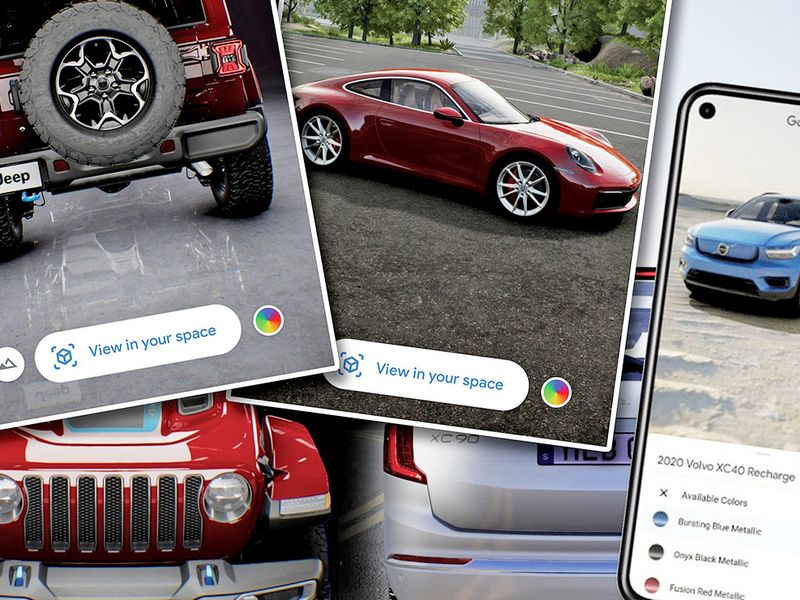
Before Jeep fans buy a Wrangler 4xe to take off road, they can see how it fits in their garage next to their kayaks and camping gear while doing research.
The only thing they need is a smartphone.
Jeep is one of several automakers experimenting with a budding augmented reality tool for mobile Google searches that allows users to conduct virtual walkarounds of new models, check out color options, view the interiors in some cases and place the vehicles in a consumer’s everyday environment. This augmented experience is available to Android and iOS users.
The highly searched Wrangler’s popularity made it a good fit for this experience, said Tom Laymac, director of global digital marketing for Jeep parent Stellantis.
Laymac said Google approached the automaker about trying the technology. A cloud-based augmented-reality experience for the Wrangler plug-in hybrid initially was tested during the virtual CES in January.
“The technology has gotten to the point where it’s not cartoonish,” Laymac told Automotive News. “It does have the granularity so that you can see the different materials. You can look at even the leather stitching on the skin, so it gives a person a perspective of what perhaps they would want to buy.”
Google is rolling out this interactive component at a time when the pandemic has accelerated the migration of vehicle shopping online. Dealerships have been adopting digital retailing tools to interact remotely with consumers during the buying process, and now Google is arming shoppers with another option that will prepare them even further before making a purchase.
Google said in a January post announcing its Jeep collaboration that it had sped up its support of consumer experiences in light of the health crisis.
The AR Autos feature was launched in December and appears in searches for 2020 or 2021 vehicles for which Google has a matching 3D model. Numerous vehicles, including the Jeep Gladiator and Toyota RAV4, are available for exterior walkarounds but don’t have interior views just yet.
For select vehicles, such as the Wrangler 4xe, Google said it is working with manufacturers to deliver more high-quality, photo-realistic cloud-streamed models that include the interiors. Other auto partners in this effort include Volvo and Porsche.
“We’re jointly learning. This is where we think the environment is going [and] what consumers want,” Laymac said.
“We have the data and the right format, they have the platform, so it was just a natural partnership. Not costing a lot of money to do it. It’s just applying the data in this expanded platform, and then seeing how it should be presented to the consumer.”
To create the mixed-reality experience with the 3D models, Google said it turned to “computer-aided design-based data sources that represent a 3D vehicle with highly detailed geometry, depth, texture and lighting.” To ensure fast loading times of the higher-fidelity models that include interiors, the company said it renders them in Google Cloud, then streams the vehicles to devices.
Google said it’s licensing 3D assets from a variety of sources and welcomes the opportunity to work with more automakers. The company said AR Autos was in development before the pandemic but that it released the tool sooner than anticipated because of the “broader shift from brick-and-mortar retail to e-commerce.”
Augmented reality has been gaining steam among automakers. Chevrolet has been using augmented technology within banner ads that link to vehicle configuration and “locate a vehicle” pages. The augmented ad units feature the Bolt EV, and Chevrolet said this month that the Silverado will get this treatment as well in the coming weeks. Other brand vehicles will be showcased in this augmented ad experience in the months ahead.
Chevrolet said it has seen encouraging engagement from this augmented technology, with interaction times 45 percent higher than standard banners.
Brands such as BMW have dabbled in augmented reality on messaging app Snapchat.
“A vehicle is one of the largest purchases individuals make, so it makes sense to research using available tools,” Chevrolet said in a statement.
“We’re finding that most people like a combination of virtual and in-person experiences, however, meaning that we need to keep innovating online and in the showroom to meet buyers’ needs.”